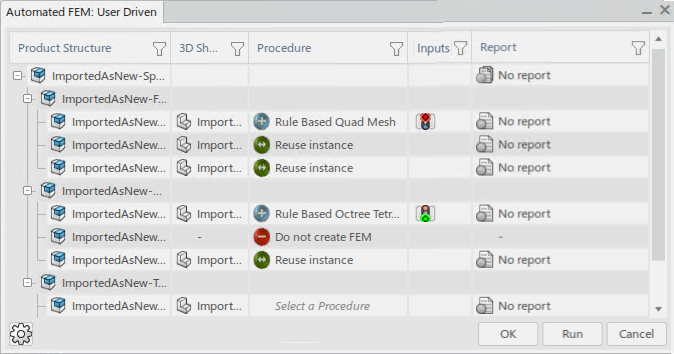About the User-Driven Automated FEM Method | |||||
|
| ||||
The user-driven method allows you to work with individual products or assemblies. You can use it to create an assembled finite element model (FEM) representation and to mesh an assembly made of subproducts with 3D shape representations. You can also use this method to run procedures that idealize geometry or to complete other tasks on a product before meshing.

When you run the user-driven method, it creates any required model modifications, such as defeatured geometry or midsurfaces. The user-driven method does not account for meshed connections. Use a different automated FEM method if you want to mesh connections in your model.
By default, the method creates one child FEM representation for each leaf product to be meshed and one FEM representation that assembles all the child FEM representations. You can change the execution options to instead create one FEM representation for the entire assembly.